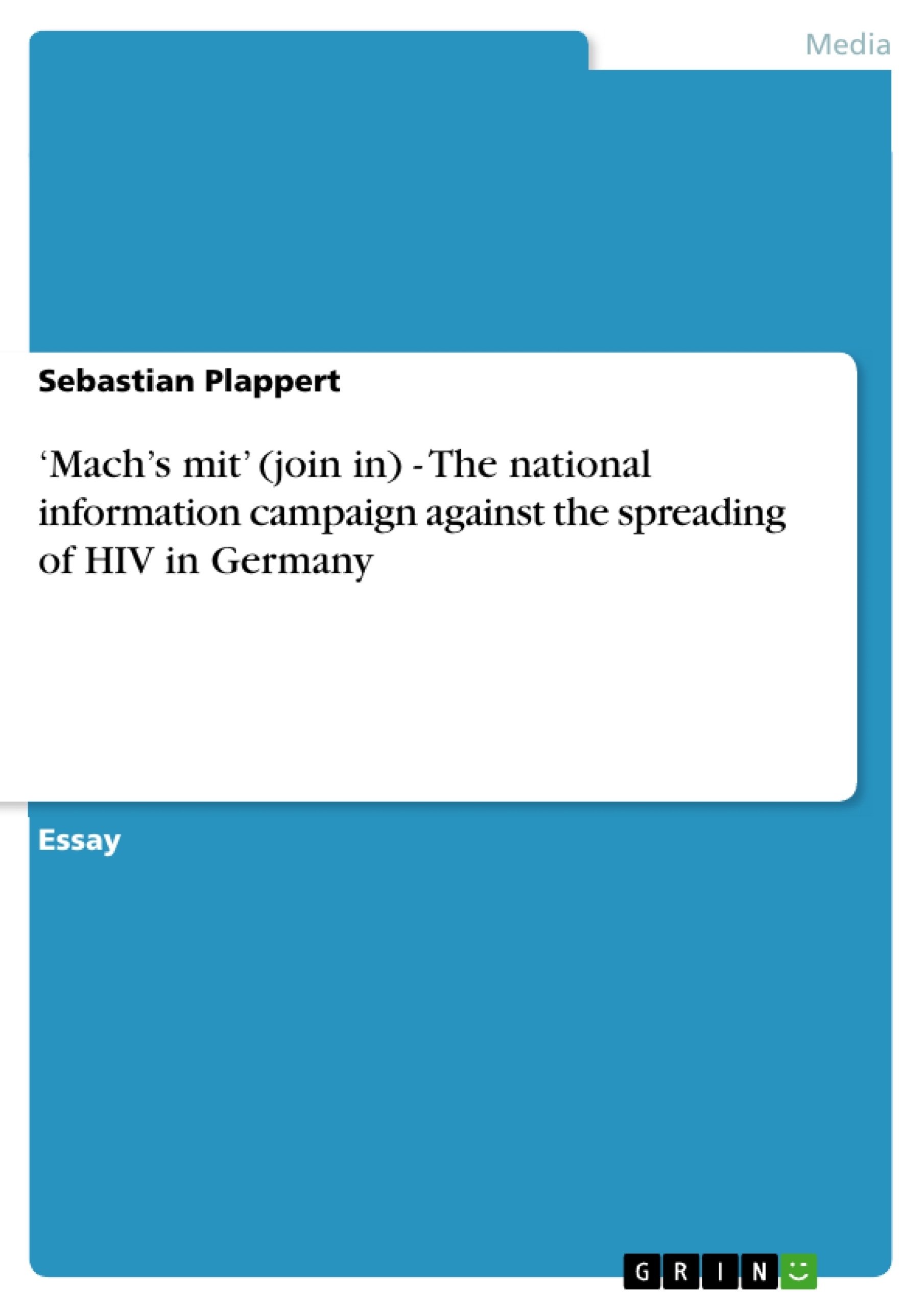This paper will analyse the "mach’s mit" - Information Campaign initiated by the German government to prevent the spreading of HIV in Germany. At first background information will be given in order to outline the problem, the objective and the target group, before linking the campaign’s conception to theoretical considerations of persuasion.
Inhaltsverzeichnis (Table of Contents)
- HIV in Germany
- The New Problem
- Target Audience
- Objectives
- Conceptualisation
- Continuing Evaluation
Zielsetzung und Themenschwerpunkte (Objectives and Key Themes)
This paper analyzes the "Mach's mit" information campaign initiated by the German government to prevent the spread of HIV in Germany. It aims to provide background information on the problem, objectives, and target group, before linking the campaign's conception to theoretical considerations of persuasion.
- The growing challenge of HIV prevalence in Germany despite existing awareness campaigns.
- The importance of targeting specific audience segments and utilizing various communication channels.
- The role of theoretical frameworks and persuasive strategies in designing effective public health campaigns.
- The need for continuous evaluation and adaptation of campaign strategies based on audience reception and research findings.
- The integration of diverse theoretical models to address the complex nature of behavior change.
Zusammenfassung der Kapitel (Chapter Summaries)
- HIV in Germany: This section presents the context of HIV prevalence in Germany, highlighting the relatively low infection rates compared to other countries. It also acknowledges the increasing number of new HIV diagnoses in recent years, indicating a need for updated prevention strategies.
- The New Problem: This section explores the reasons behind the resurgence of HIV infections in Germany, despite high levels of knowledge about the disease. It discusses the role of "condom fatigue" and shifting perceptions of AIDS as a health risk.
- Target Audience: This section examines the process of identifying and segmenting target groups for the "Mach's mit" campaign. It focuses on the importance of reaching different audience segments with tailored messages and utilizing appropriate communication channels.
- Objectives: This section outlines the campaign's objectives, which extend beyond simply providing information. It emphasizes the importance of promoting behavioral change, specifically encouraging the use of condoms as a natural part of sexual activity.
- Conceptualisation: This section delves into the theoretical framework underpinning the "Mach's mit" campaign. It explores the integration of various models, including the Health Belief Model, the Theory of Reasoned Action, and Social Cognitive Theory, to address the complex dynamics of persuasion and behavior change.
Schlüsselwörter (Keywords)
Key terms and focus topics of the text include HIV prevention, information campaigns, social marketing, persuasion, behavior change, target audience segmentation, theoretical models, media impact, campaign evaluation, and public health communication.
- Quote paper
- MIR, MA Sebastian Plappert (Author), 2008, ‘Mach’s mit’ (join in) - The national information campaign against the spreading of HIV in Germany, Munich, GRIN Verlag, https://www.grin.com/document/153940



